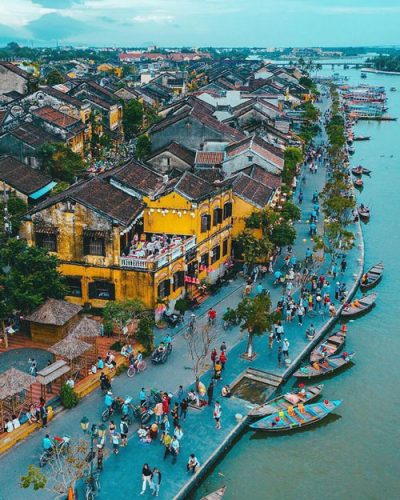
Nestled along Vietnam's central coast, Hoi An is a UNESCO World Heritage site renowned for its well-preserved ancient architecture and vibrant culture. From the iconic Japanese Covered Bridge to bustling markets and serene beaches, Hoi An offers a rich tapestry of experiences, making it a must-visit destination for any traveler. Discover everything you need to know about Hoi An Vietnam Travel in our informative guide.

When planning a trip to Hoi An, Vietnam, the best time to visit depends on your preferences:
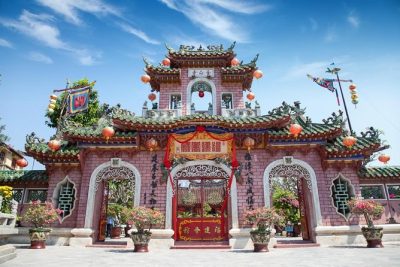
Built in 1885, this hall is a masterpiece of Cantonese architecture. It showcases elaborate decorations, intricate wood carvings, and sharp ceramic pieces. The artifacts within depict the rich cultural heritage of the Cantonese community, portraying their daily life, beliefs, and values. Visitors will marvel at the fine craftsmanship and the historical significance of this beautifully preserved assembly hall.

Built in the mid-19th century, this assembly hall served as a place of worship for the Chaozhou Chinese community, who revered General Ma Yuan, a Han dynasty figure known for protecting seafarers. The hall's architecture is grand and distinct, with intricately carved wooden beams and vibrant motifs that tell stories of the sea and the people who relied on it.

This house is over 200 years old and has been meticulously maintained to retain its original structure. It was home to seven generations of the Le family, who were prominent merchants during Hoi An's golden age as a trading port. The architecture blends Chinese, Japanese, and Vietnamese styles, reflecting the town's cultural diversity.
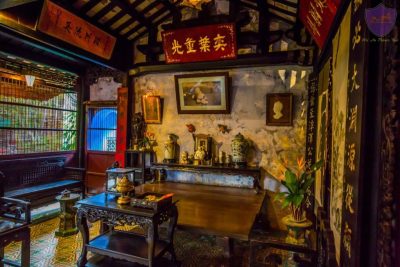
This family chapel was built by Tran Tu Nhac, a Mandarin under King Gia Long, in the early 19th century. The design combines Japanese, Chinese, and Vietnamese elements, symbolizing the deep cultural ties within the town. The chapel serves as a place of ancestor worship for the Tran family and provides a glimpse into the religious customs of the time.
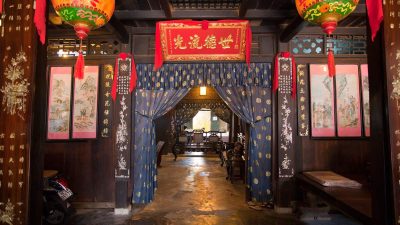
Phung Hung House is a well-preserved merchant house, made entirely of wood, that showcases the traditional architecture of Hoi An's wealthy trading families. Built over 200 years ago, it offers an excellent example of Hoi An’s classic home design: large, airy rooms, polished wooden beams, and antique furniture.
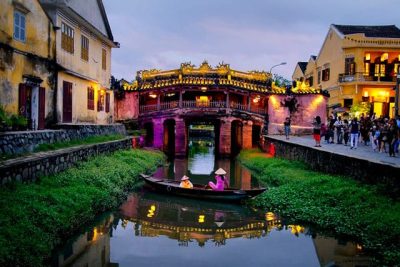
A symbol of Hoi An, this iconic bridge was built in the early 17th century to link the Japanese and Chinese quarters. It’s famous for its unique architecture, featuring a wooden pagoda roof and a small temple inside, where the deity Bac De Tran Vo is worshipped. Legend has it that the bridge was constructed to subdue a water monster, which was believed to cause natural disasters.
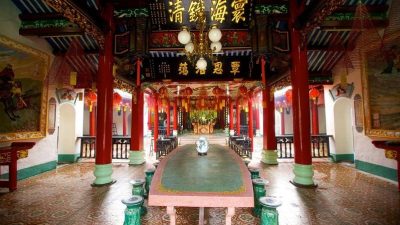
This assembly hall, built in 1697, is a place of worship dedicated to Thien Hau, the goddess of the sea. The hall's stunning architecture, with its dragon statues, phoenix designs, and large incense coils, makes it one of the most sacred places in Hoi An. It served as a gathering spot for Fujian Chinese immigrants and remains a symbol of their devotion and community spirit.
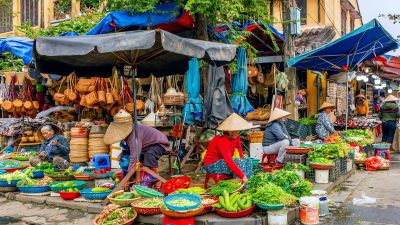
A lively market offers various goods, including fresh produce, handmade crafts, and traditional food. It's a great spot for experiencing the daily hustle and bustle of Hoi An’s local life and culture. The market is particularly famous for its food stalls, where visitors can sample local delicacies.

Located about 40 km from Hoi An, My Son is a UNESCO World Heritage Site, featuring a collection of Hindu temple ruins that were built by the Cham people between the 4th and 13th centuries. Surrounded by lush mountains, these temples are a must-see for history lovers interested in Cham culture and ancient Hindu architecture.
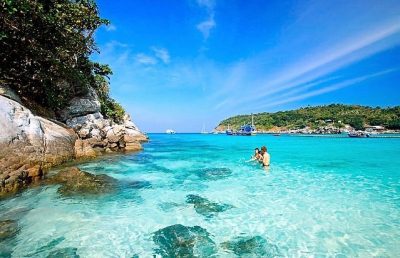
This group of eight small islands is a marine paradise located about 15 km from Hoi An. Famous for its crystal-clear waters, pristine beaches, and vibrant coral reefs, Cham Islands are perfect for nature lovers and adventure seekers. Popular activities include diving, snorkeling, and island tours.

Just 7 km from Hoi An's ancient town, An Bang Beach is a great spot for sunbathing, swimming, and enjoying fresh seafood at the beachside restaurants. The clear waters and peaceful atmosphere make it a popular retreat for those looking to relax and unwind.

Despite the erosion issues, Cua Dai Beach remains a favorite spot for visitors to enjoy the sea breeze and stunning sunsets. Lined with coconut trees and white sand, it’s a quiet getaway from the bustling town.
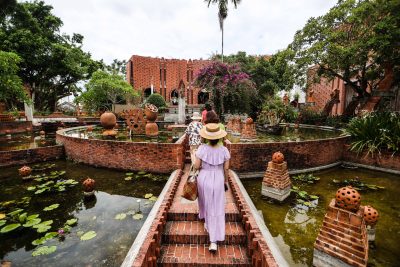
Located just 3 km from the town center, this pottery village has been producing handmade ceramics for over 500 years. Visitors can watch the artisans at work, create their own pottery, and explore the terracotta park showcasing large sculptures and pottery works.

This village is known for its organic farming practices and fresh produce. Visitors can participate in farming activities, learn about local agriculture, and enjoy farm-to-table dining experiences.
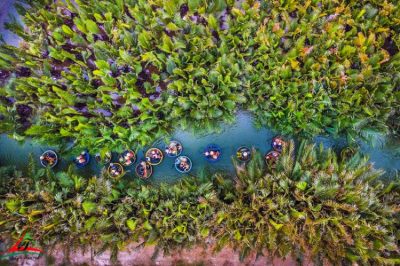
Located in Cam Thanh, this lush forest is home to water coconut trees and is often referred to as the “Mekong Delta in Hoi An.” Visitors can take a traditional basketboat ride, watch local performances, and explore the tranquil waterways.

Tam Thanh Mural Village is a vibrant coastal community that has transformed into an outdoor gallery. The village is famous for its colorful murals, which were painted by Vietnamese and Korean artists as part of a community art project. These murals depict scenes of daily life, local culture, and the stories of the village’s inhabitants.
The Hoai River runs through the heart of Hoi An Ancient Town, providing scenic beauty at different times of the day. Early morning brings a tranquil, misty atmosphere as the river reflects the town's ancient charm. In the evening, the river transforms into a magical sight as it lights up with colorful lanterns.
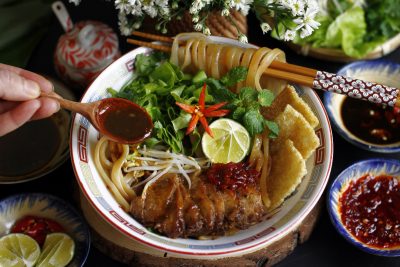
This is one of Hoi An's signature dishes, featuring thick noodles with a unique texture, a savory broth, and an array of toppings like pork, fresh herbs, and crispy croutons. It differs from other Vietnamese noodle dishes due to its firmer, chewier noodles and the use of local well water and ash-soaked noodles, which give it a distinctive flavor and texture.

A favorite among locals and tourists alike, Hoi An chicken rice is served with aromatic rice cooked in chicken broth and yellow turmeric. The dish is accompanied by shredded chicken, herbs, and pickled vegetables, with a flavorful black pepper dipping sauce that brings all the flavors together.

Considered one of the best banh mi sandwiches in the world, Phuong Bread is renowned for its crispy baguette, stuffed with a perfect mix of meat, pâté, fresh herbs, and crunchy vegetables. The combination of flavors and textures in each bite is why this humble sandwich has gained international fame.

Hoi An offers a variety of sweet soups, or "che," that serve as refreshing desserts after a meal. Some popular varieties include corn sweet soup, black sesame sweet soup, and mung bean sweet soup, each offering its own unique texture and taste. These sweet soups are loved for their smooth consistency and subtle sweetness.

Named for their delicate rose-like shape, these translucent dumplings are filled with shrimp, meat, or mushrooms, offering a flavorful burst in every bite. The dumplings are typically served with crispy shallots and a sweet-and-sour dipping sauce, making them a delightful snack or appetizer for visitors looking to experience traditional Hoi An cuisine.

Hoi An is known for its vibrant coffee culture, offering a variety of unique coffee experiences. From traditional Vietnamese drip coffee to trendy cafes with beautiful views, coffee enthusiasts will find plenty to explore.
This is the best way to explore the ancient town, enjoy the breeze, and experience the peaceful life here. Some hotels in Hoi An offer free bicycles for guests, or you can rent one for around 40,000 VND/day.
Renting a motorbike is easy and convenient for visiting tourist attractions in Hoi An. Rental prices range from 120,000 to 150,000 VND/day.
Cyclos are an iconic feature of the ancient town, offering visitors a charming and memorable experience. Based on past travelers' recommendations, it's best to catch a cyclo on Phan Chau Trinh or Tran Phu streets. The price is around 150,000 VND/hour per cyclo.
To travel between different tourist spots in Hoi An, you can take a taxi from trusted and well-known companies. However, it’s advisable to check the taxi rates beforehand. For example, a 4-seater taxi in Hoi An costs between 11,000 - 15,000 VND/km for the first 30 km and 9,000 - 12,000 VND/km for distances beyond 31 km.
Taking a boat ride on the Hoai River or Thu Bon River is a must-try experience when exploring Hoi An. Boats are easily available at the river dock in the center of the ancient town. For a small boat ride, the price is about 50,000 VND for 2 people on weekdays when it’s less crowded. During peak times, a boat for 4 people costs around 200,000 VND for a 20-minute ride.
These tips will enhance your travel experience in Hoi An, a charming destination renowned for its historical significance and stunning landscapes. With its well-preserved ancient town, vibrant culture, and delicious cuisine, Hoi An offers a unique escape into Vietnam's rich heritage.
Beyond Hoi An, you can explore the breathtaking beauty of Ha Long Bay, the idyllic beaches of Nha Trang, or the scenic rice paddies and limestone cliffs of Ninh Binh.
To ensure a seamless travel experience, we provide Vietnam visa services, making your journey to Hoi An and these incredible destinations hassle-free.
We provide fast Vietnam tourist visa services in as little as 1 hour